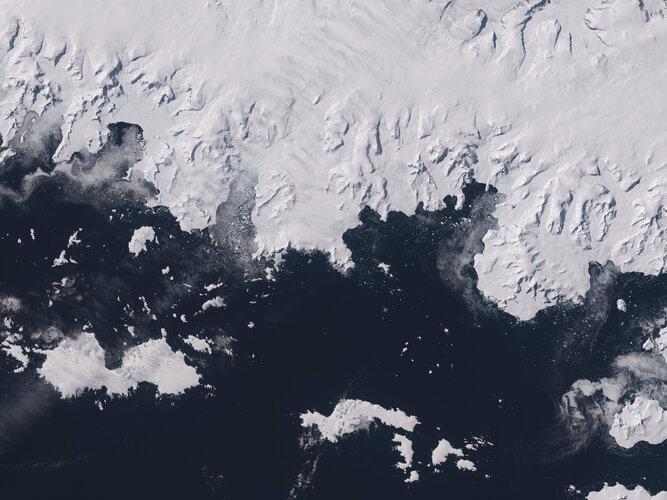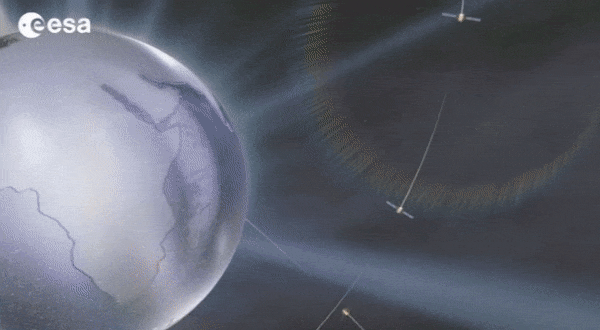
Copernical Team
DLR Gottingen helps in the search for signs of life in space
 Is there life on other planetary bodies? Jupiter's moon Europa could provide an answer to this question: it is believed to harbour an ocean of water beneath its icy surface. But how might an exploration mission to the Jovian satellite be conducted without contaminating the landing site? To find out, researchers at the German Aerospace Center in Gottingen have carried out investigations in a uniq
Is there life on other planetary bodies? Jupiter's moon Europa could provide an answer to this question: it is believed to harbour an ocean of water beneath its icy surface. But how might an exploration mission to the Jovian satellite be conducted without contaminating the landing site? To find out, researchers at the German Aerospace Center in Gottingen have carried out investigations in a uniq It's a weird, weird quantum world
 In 1994, as Professor Peter Shor PhD '85 tells it, internal seminars at AT&T Bell Labs were lively affairs. The audience of physicists was an active and inquisitive bunch, often pelting speakers with questions throughout their talks. Shor, who worked at Bell Labs at the time, remembers several occasions when a speaker couldn't get past their third slide, as they attempted to address a rapid line
In 1994, as Professor Peter Shor PhD '85 tells it, internal seminars at AT&T Bell Labs were lively affairs. The audience of physicists was an active and inquisitive bunch, often pelting speakers with questions throughout their talks. Shor, who worked at Bell Labs at the time, remembers several occasions when a speaker couldn't get past their third slide, as they attempted to address a rapid line High-fidelity simulation offers insight into 2013 Chelyabinsk meteor
 On the morning of Feb. 15, 2013, a small asteroid exploded over Chelyabinsk, Russia, sending a loud shockwave and sonic boom across the region, damaging buildings and leaving around 1,200 people injured. The resulting meteor, with a diameter of approximate 20 meters (roughly the size of a six-story building), was one of the largest to be detected breaking up in the Earth's atmosphere in more tha
On the morning of Feb. 15, 2013, a small asteroid exploded over Chelyabinsk, Russia, sending a loud shockwave and sonic boom across the region, damaging buildings and leaving around 1,200 people injured. The resulting meteor, with a diameter of approximate 20 meters (roughly the size of a six-story building), was one of the largest to be detected breaking up in the Earth's atmosphere in more tha Taking turns with Tapo Caparo: Sols 3766-37368
 Curiosity has spent the last week or so balancing power constraints to enable remote science and environmental observations, along with the analyses of the "Tapo Caparo" Marker band drilled sample with the rover's internal CheMin and SAM instruments to determine mineralogy and composition. While drill sample is held within the drill bit assembly, we are unable to use the other arm instruments (M
Curiosity has spent the last week or so balancing power constraints to enable remote science and environmental observations, along with the analyses of the "Tapo Caparo" Marker band drilled sample with the rover's internal CheMin and SAM instruments to determine mineralogy and composition. While drill sample is held within the drill bit assembly, we are unable to use the other arm instruments (M Private firm to launch maiden rocket flight in Spain
 A micro rocket built by a Spanish company will lift off within several weeks, Prime Minister Pedro Sanchez said on Saturday, a first for Spain as a space race hots up in Europe.
"This rocket, when it is launched, we Spaniards we will all watch it on television and I know that when, within several weeks MIURA1 will begin its journey, the devotion and hard work of many people ... will have bee
A micro rocket built by a Spanish company will lift off within several weeks, Prime Minister Pedro Sanchez said on Saturday, a first for Spain as a space race hots up in Europe.
"This rocket, when it is launched, we Spaniards we will all watch it on television and I know that when, within several weeks MIURA1 will begin its journey, the devotion and hard work of many people ... will have bee Asteroid has slim chance of collision course with Earth in 2046
 An asteroid about the size of an Olympic swimming pool has a "very small chance" of smashing into Earth when the giant space rock streaks through the solar system in 23 years.
Scientists expect the giant rock to hurtle into Earth's path on Feb. 14, 2046, in what will most likely be a close encounter rather than a direct impact.
The asteroid was discovered Feb. 26 by astronomers a
An asteroid about the size of an Olympic swimming pool has a "very small chance" of smashing into Earth when the giant space rock streaks through the solar system in 23 years.
Scientists expect the giant rock to hurtle into Earth's path on Feb. 14, 2046, in what will most likely be a close encounter rather than a direct impact.
The asteroid was discovered Feb. 26 by astronomers a Launch of world's first 3D-printed rocket canceled at last second
 The launch of the world's first 3D-printed rocket was ultimately scrubbed after several tries on Saturday, marking a new setback for the private owner of an innovative spacecraft billed as being less costly to produce and fly.
Engines had begun igniting on the unmanned Terran 1 rocket, built by California aerospace startup Relativity Space, when an "automation" issue caused the company to ab
The launch of the world's first 3D-printed rocket was ultimately scrubbed after several tries on Saturday, marking a new setback for the private owner of an innovative spacecraft billed as being less costly to produce and fly.
Engines had begun igniting on the unmanned Terran 1 rocket, built by California aerospace startup Relativity Space, when an "automation" issue caused the company to ab Earth from Space: Graham Coast, Antarctica
 Image:
The icy landscape of Graham Coast, which lies on the west side of the Antarctic Peninsula, is featured in this Copernicus Sentinel-2 image.
Image:
The icy landscape of Graham Coast, which lies on the west side of the Antarctic Peninsula, is featured in this Copernicus Sentinel-2 image. Inspiring mocktail menu served up by Space Juice winners

An impressive 70 mocktail recipes representing a wide range of flavours of ESA’s Jupiter Icy Moons Explorer (Juice) mission were submitted to the Agency’s #SpaceJuice competition in January.
Galileo: no way without time

Europe’s Galileo is the world’s most precise satellite navigation system, providing metre-level accuracy and very precise timing to its four billion users. An essential ingredient to ensure this stays the case are the atomic clocks aboard each satellite, delivering pinpoint timekeeping that is maintained to a few billionths of a second. These clocks are called atomic because their ‘ticks’ come from ultra-rapid, ultra-stable oscillation of atoms between different energy states. Sustaining this performance demands, in turn, even more accurate clocks down on the ground to keep the satellites synchronised and ensure stability of time and positioning for
